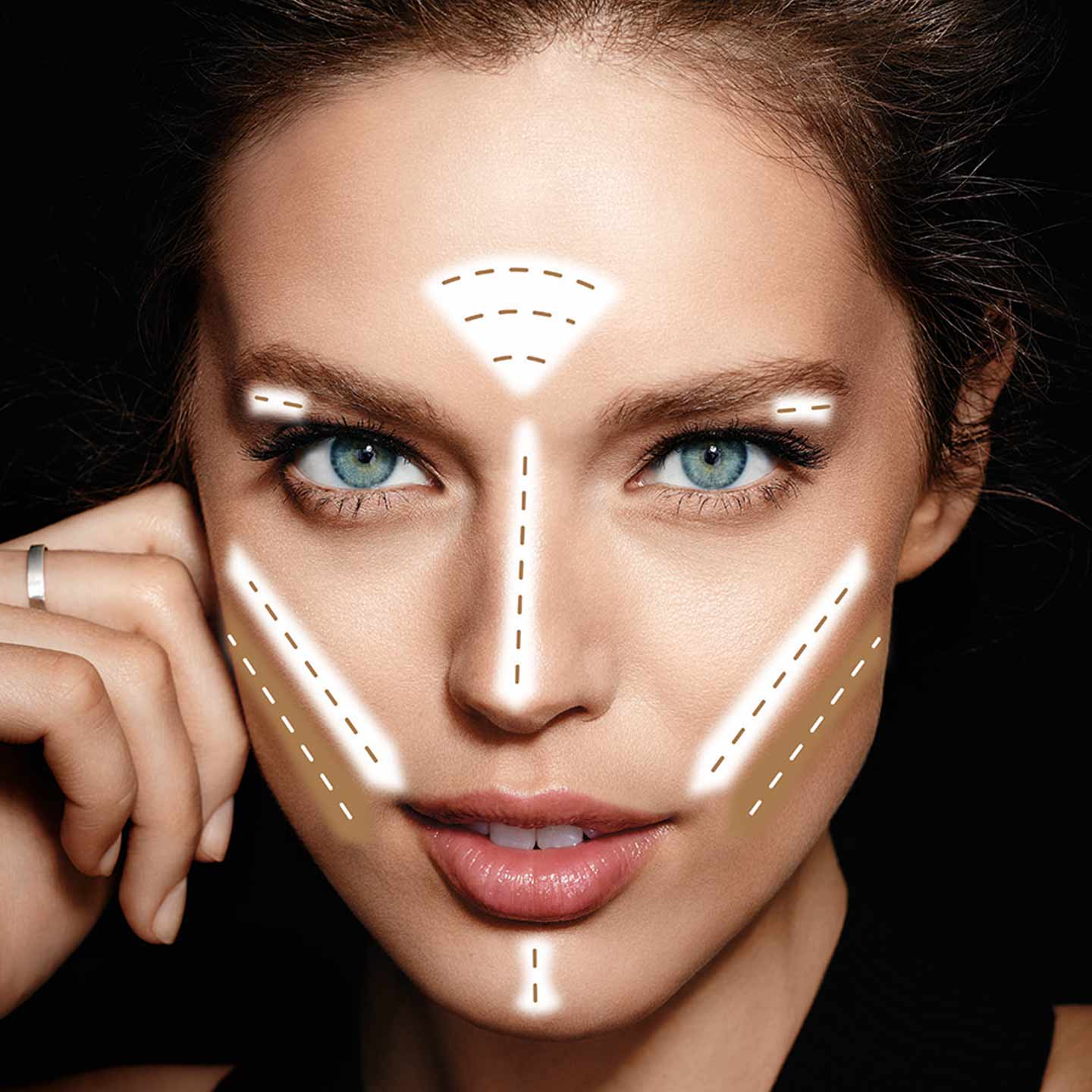 Great contouring can change the shape of your face and allow you to achieve the look you want – here are some great tips for all face shapes.
Great contouring can change the shape of your face and allow you to achieve the look you want – here are some great tips for all face shapes.
1. Contouring For The Heart-Shaped Face
Every face is unique, and smartly-applied makeup is a great way to balance features, improve symmetry, and highlight your best features. You just need to bear your individual needs in mind and adjust your makeup strategy accordingly. For a heart-shaped face, for instance, you’re dealing with wide cheekbones and a pointed chin. Use contouring from the temples down to mid-cheek level in order to balance out your face’s shape and make the upper portion appear narrower. You should use similar techniques around your chin – highlighting the middle and contouring the end – in order to produce a broader, more rounded appearance.
2. Contouring For The Square-Shaped Face
A square-shaped face is one where width and length are roughly equal, as are the jawline and hairline. This can be a challenging look to deal with until you master the right makeup style. If you have this situation yourself, contouring is a great way to add a little more shape to the silhouette of your face. Contour along your temples and forehead to reduce its apparent width; highlighting the center of your forehead will improve the effect. Contour your cheekbones and add highlights beneath your eyes in order to slim down the middle of your face. Add more shapeliness to your chin by highlighting the end and contouring your jawline.
3. Contouring For The Diamond-Shaped Face
If you have a diamond-shaped face, that means you have wide cheeks, a narrow hairline, and a narrow, pointed chin. This natural face type can come off a little angular, so what you want to do is apply highlights with the “inverted triangle” method. Concentrate on the center of your forehead and your chin and underneath your eyes. Contouring should be applied just below your cheekbones, going from your ears out to the center of the cheeks. This will create a more rounded overall appearance and minimize the appearance of unwanted angularity.
4. Contouring For The Oblong Face
On the oblong face, length is the dominant attribute and features like the chin, hairline, and jaw are relatively undistinguished. Contouring can enhance what shape you do have and make your features stand out more. Contour below your hairline to minimize your forehead’s prominence and beneath your chin for a similar effect. Contouring on the sides of your face, from your ears to the middle of your cheeks, will have a slimming effect. Use a long inverted triangle to apply highlights beneath your eyes to round off the effect.
5. Contouring For The Rectangular Face
If your face is relatively long with equal-width hair and jawlines and a square jaw, you have what is often called a rectangular face. In this situation, you’ll want to contour along the hairline to bring it down, underneath the jawbone to enhance its shape, and down the sides of your forehead to create a narrower appearance. Contouring beneath your cheekbones may also help if this part of your face needs to be thinned. Highlight beneath your eyes to brighten them up and also try highlighting the middle of your chin. With practice, you can effortlessly soften your features and make them look their best.
6. How To Contour The Oval-Shaped Face
When makeup experts talk about an “oval-shaped” face, what they’re usually referring to is a shape that might also be called an upside-down egg. This sort of face is slightly longer than it is wide and features a rounded chin, jaw, and hairline. When you have this sort of face and you’re looking to enhance it, the best way to start is by using contouring to narrow the appearance of your forehead (by contouring along the sides) and your cheekbones (slim them down by contouring beneath them). Add definition to your chin and the middle of your forehead by highlighting both areas. According to Dore Aesthetics you can also brighten up your eyes by highlighting your brows and the skin beneath the eyes.
7. Contouring For The Round-Shaped Face
A round face is one where all of the features are nicely rounded and overall width and length are roughly equal. When your face is shaped this way, you should use contouring to create the illusion of additional length. The best way to do this is by contouring down from the sides of the forehead, over the temples, and all the way to the jawline. This will create a much narrower look. Complete the job by applying highlights on the center of your forehead, beneath your eyes, and at the middle of the chin. This will produce more dramatic definition and make your face stand out better.
8. Thinning The Nose
Smart contouring isn’t just about enhancing the overall shape of your face; you can use the same techniques to improve individual features as well. If, for instance, you want your nose to look thinner, contouring can help. Simply find foundation or concealer that is two shades darker than your natural skin tone and apply it to the sides of your nose. Complete the effect by highlighting along the bridge of the nose. The changes in color will help minimize the apparent thickness of your nose.
9. Softening A Pointed Chin
Highlighting is an important makeup skill that can be used on many different parts of the face. It can help to round out the appearance of a pointed chin. Simply start by highlighting alone your jawline and then contour out to the end of the chin. This will serve to de-emphasize darker areas of your jaw and point up the lighter areas.
10. Using Contouring To Round A Square Jaw
This is another excellent example of the sorts of dramatic changes you can create with good makeup work. If you want to make a square jawline less prominent, just start by contouring all around the edges of your jaw. Bring the contouring up to the hairline and add highlights on your cheekbones. The end result should be a more rounded, softer appearance overall.





